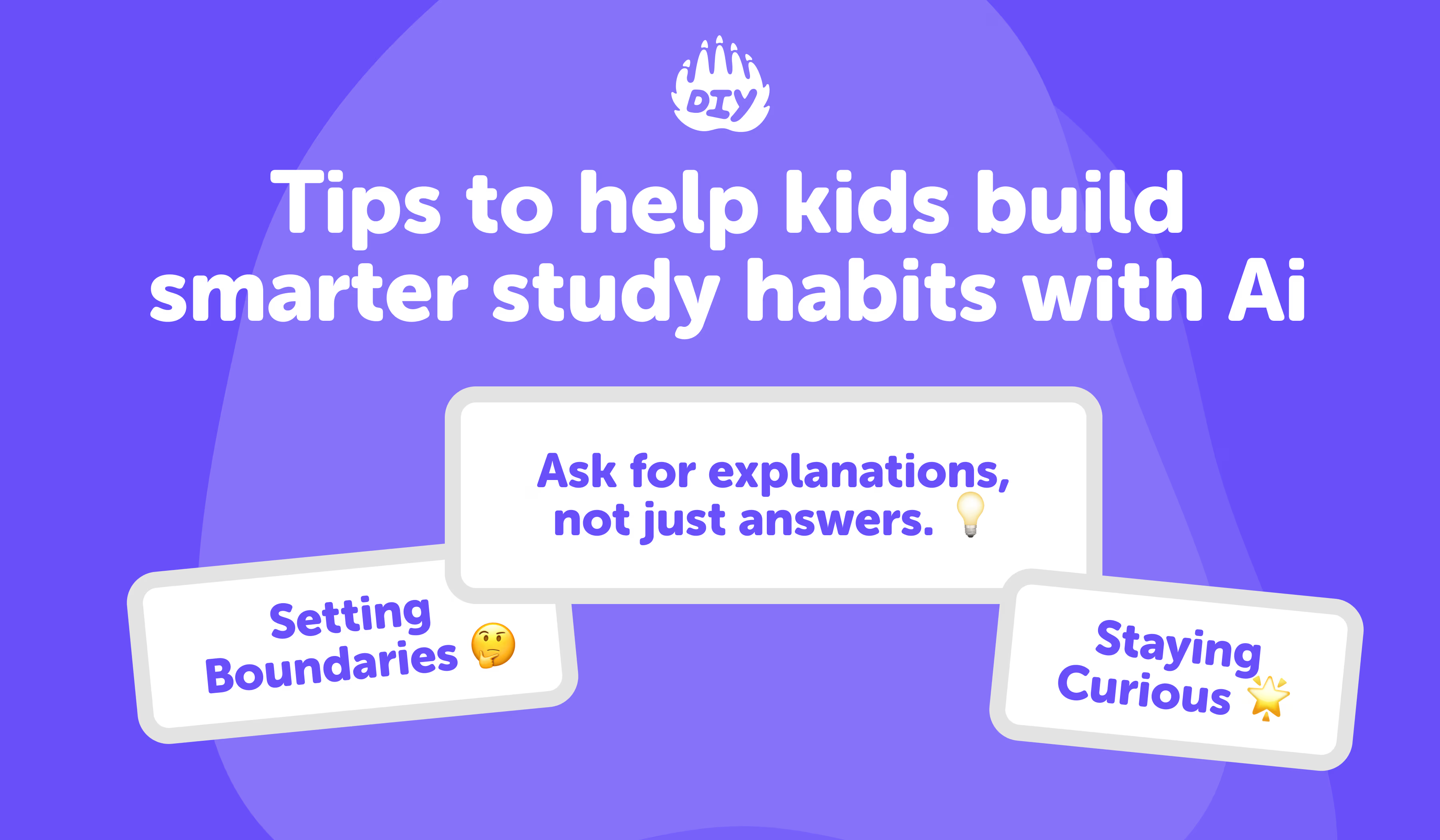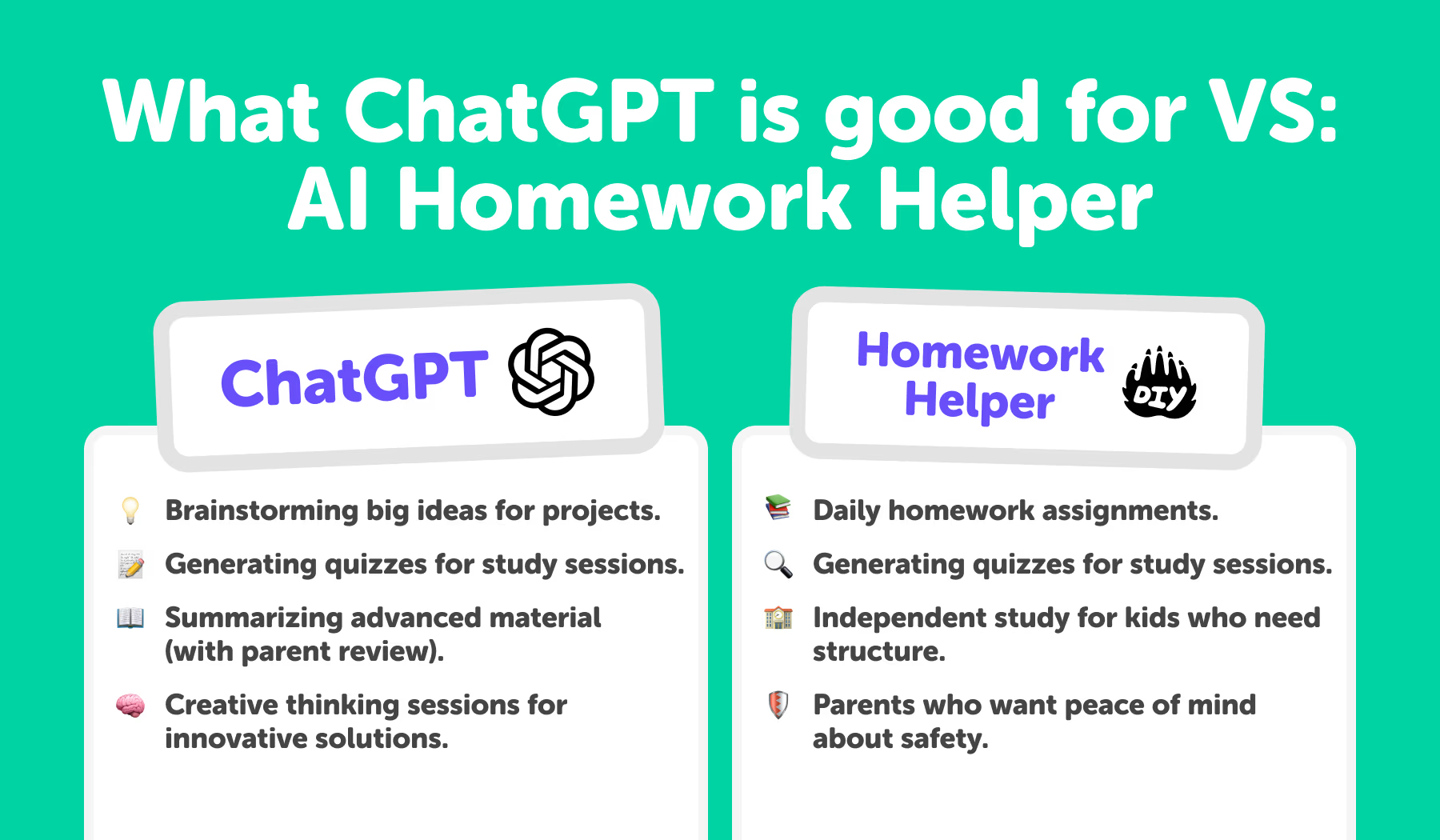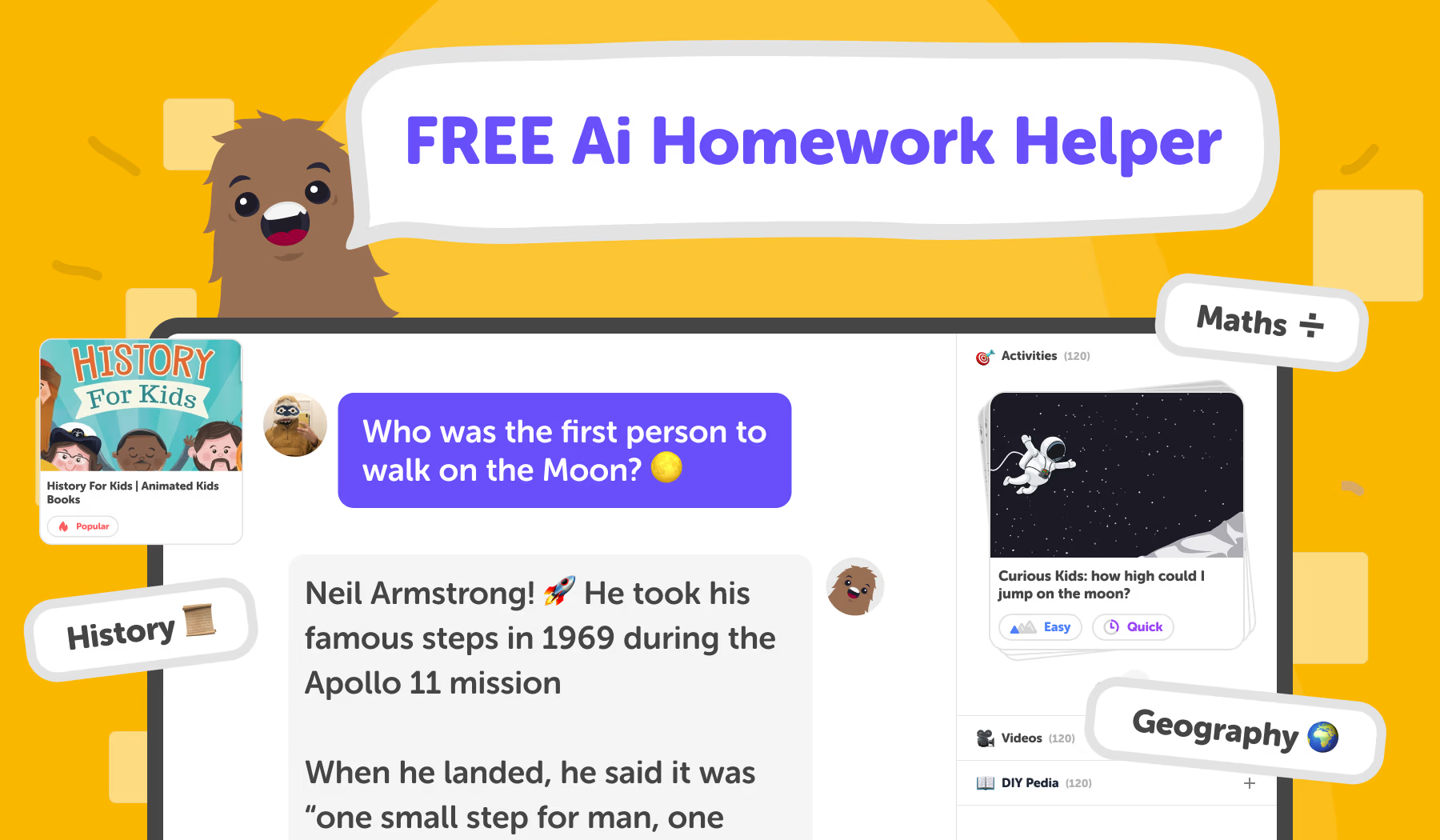ChatGPT can be an awesome study buddy when you use it to learn, not to copy. Below, we show kids and parents simple ways to get explanations, practice, and feedback while keeping academic integrity intact. You’ll also see the best student prompts, how to cite AI in MLA/APA, and when to switch to a kid-safe tool like DIY.org’s Homework Helper.
For younger learners, consider a kid-safe homework helper with built-in guardrails and privacy protections. It keeps the focus on learning habits, not shortcuts.
What “ethical use” of AI looks like for students
Ethical AI use is simple: learn with it, don’t hand in its words. Use ChatGPT to:
Explain a concept in plain language (then restate it in your own words).
Outline ideas before you write (you do the actual writing).
Quiz yourself with short questions, hints, and step-by-step walkthroughs.
Plan your study time (e.g., a 7-day review plan before a test).
Many schools now encourage responsible use of AI for learning while pairing courses with at least one AI-free assessment (like in-class writing, oral presentations, or practical demos) to maintain integrity. Policies vary, so always check the course rules.
New ChatGPT “Study Mode” (and when to use a kid-safe tool)
Study Mode is designed for learning helping you work through problems step by step rather than just giving an answer. It supports explanations, structured practice, and self-quizzing great for homework reviews and exam prep. Availability is rolling out across ChatGPT plans (Free, Plus, Pro, Team; Edu soon).
When to use a kid-safe helper instead: For younger kids, a dedicated, kid-first tool with guardrails and privacy protections can be a better fit for family rules and classroom expectations especially when you want less open-ended AI and more guided, age-appropriate practice.
Student-friendly prompts that teach (not cheat)
Use any subject or topic in {brackets}. These hit what families search for: ChatGPT study tips, prompts for students, homework prompts, Socratic practice, and step-by-step explanations.
Explain it simply
“Explain {topic} in three levels—beginner, middle school, advanced—with short examples for each.”
Walk me through the steps
“Guide me through a {type of problem} one step at a time. Ask me to try each step before you reveal the next.”
Socratic quiz
“Ask me 5 questions about {chapter}. If I’m wrong, give a gentle hint and a tiny example.”
Outline first, write later
“Help me outline an essay for {prompt} and make a research checklist. Don’t write the essay.”
Study plan
“Create a 7-day study plan for {unit} with 30-minute sessions, practice items, and a wrap-up quiz.”
Exactly how to cite ChatGPT (MLA & APA)
Bottom line: If your school asks you to acknowledge AI assistance, do it. Here are plain-English guides you can follow and link in your references section.
MLA (Modern Language Association)
MLA treats generative AI as a source with a description. Include the tool name (ChatGPT), the prompt description, and the date/time you accessed it.
The MLA Style Center’s guidance is updated regularly always check the latest notes before submitting.
APA 7th edition
APA provides clear instructions for referencing ChatGPT (as software or a ChatGPT response) and how to present AI-generated text in your paper. Include OpenAI as the author, the tool name, version/model if known, and the URL.
Policies evolve quickly verify your teacher’s requirements and the newest MLA/APA notes before you turn work in.
What not to do (and why AI “detectors” aren’t a safety net)
Don’t paste a question and turn in the output as your own. That’s still plagiarism.
Don’t rely on AI “detectors” to prove innocence. These tools can mislabel honest students or miss sophisticated edits, and universities/regulators warn that detection alone isn’t reliable. Many schools are shifting toward assessment design (AI-free exams, presentations, or practicals) instead of detector-only enforcement.

Parent checklist for safe AI homework
Set clear “what’s OK” rules: explanations, outlines, self-quizzing; not copy-paste answers.
Ask your child to keep a one-line usage note in assignments when required (e.g., “AI was used for explanation and practice questions”).
Encourage citations when teachers or school policies request them (see MLA/APA above).
Favor kid-safe tools for elementary learners.
Quick start: 5-minute Study Mode routine
Ask for a plain-language explanation of today’s topic.
Have Study Mode quiz you with 3-5 questions.
Request a step-by-step walkthrough for one tricky problem.
Try a similar problem on your own (no AI).
Write a one-line usage note/citation if required.
What Teachers Think About ChatGPT
Teachers have mixed feelings, but many see potential if used correctly:
Pro: It can personalize explanations for each student.
Pro: It saves teachers from answering the same basic questions repeatedly.
Pro: It can spark curiosity in kids who might otherwise feel stuck.
But teachers also warn:
Overuse can weaken critical thinking.
Kids may turn in AI work without learning the material.
It requires guidance from parents and educators.
That’s why tools like the AI Homework Helper exist to bridge the gap between what parents want (safe, guided help) and what teachers need (students who actually learn).

FAQs Parents’ Biggest Questions
Is using ChatGPT for homework cheating?
It depends on your school’s policy. Many schools allow AI for studying, outlines, and practice if you learn and cite your use while also including at least one AI-free assessment to protect integrity. Always check your teacher’s rules.
What is ChatGPT Study Mode, and how do students use it?
Study Mode focuses on step-by-step help, explanations, and self-quizzing ideal for review sessions and homework practice. Look for it in your ChatGPT app; availability is expanding across plans.
How do I cite ChatGPT?
Follow your style guide. MLA and APA both provide methods to cite ChatGPT include a description of the prompt, date/time, and tool details as required. See the latest MLA/APA guidance before you submit.
Should kids use a separate tool for homework help?
For younger learners, a kid-safe helper with guardrails and privacy protections keeps the experience age-appropriate and learning-focused.
The Future of AI in Homework
AI isn’t going away. In fact, it’s likely to become as common as calculators or Google searches. The challenge for parents and teachers isn’t banning it, it's teaching kids how to use it wisely.
The AI Homework Helper was designed to do just that: making sure AI is a tool for curiosity, understanding, and confidence, not shortcuts.

So, how should kids use ChatGPT for homework? With guidance. With limits. And with the goal of learning smarter, not lazier.
ChatGPT can be a powerful ally when it explains, guides, and quizzes. But the safest option for families is still a kid-focused tool that puts learning first, like the DIY.org homework helper tool.




